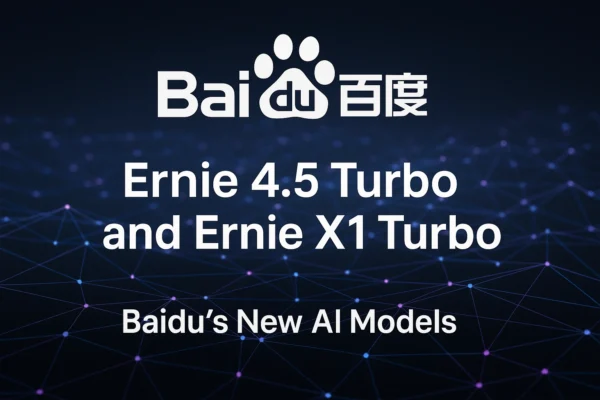
Explore Option Greeks—Delta, Theta, Gamma, Vega, Rho—in Nifty options trading. Get practical insights & examples for the Indian market on NSE.
In the fast-paced world of options trading, mastering the Option Greeks is more than just a skill—it’s a necessity for understanding any underlying assert class’ directional movement. These mathematical tools—Delta, Theta, Gamma, Vega, and Rho—help traders understand how price movements, time, volatility, and interest rates influence an option’s value. For Indian traders working with Nifty 50 options on the National Stock Exchange (NSE), grasping these Greeks is key to crafting effective strategies and managing risks in a competitive market. With the Nifty lot size now set at 75 as of April 2025, let’s dive into each Greek, explore its technical foundation, and see how it plays out with practical examples tailored to the Indian context.
1. Delta – The Directional Compass
Delta measures how much an option’s price shifts for a 1-point move in the Nifty index. Imagine you’re eyeing a Nifty call option with a Delta of 0.7. If the Nifty rises by 10 points, the premium increases by approximately ₹7, assuming other factors like volatility stay steady. This sensitivity varies based on an option’s moneyness:
At-The-Money (ATM) options hover around a Delta of 0.5, meaning they’re equally likely to expire in or out of the money.
In-The-Money (ITM) options approach a Delta of 1 for calls or -1 for puts, behaving almost like owning the index itself.
Out-of-The-Money (OTM) options have a Delta near 0, showing little reaction to Nifty moves.
Technical Insight: Delta comes from the Black-Scholes model, calculated as ( \Delta_{\text{call}} = N(d_1) ), where ( N(d_1) ) is the cumulative normal distribution, factoring in Nifty’s spot price, strike price, time to expiry, implied volatility, and the RBI’s repo rate (around 6.5% in 2025).
Practical Example: Suppose the Nifty is at 22,000, and you expect a bullish move after an RBI policy announcement. You buy 1 lot (75 units) of an ITM call option with a strike of 21,900 and a Delta of 0.8, costing ₹300 per share (₹22,500 total). If Nifty jumps 50 points to 22,050, the Delta suggests a premium increase of 0.8 × 50 = ₹40 per share, or ₹3,000 for the lot, minus some Theta decay. For hedging, if you’re short 1 Nifty futures contract (lot size 75), you could buy 150 ATM calls (Delta 0.5) to neutralize the position, balancing the 75-unit exposure. This approach works well in trending markets, but watch out for Gamma shifts as Nifty moves.
2. Theta – The Time Decay Driver
Theta tells you how much an option’s value drops each day as expiry nears, assuming everything else holds steady. It’s a double-edged sword: a friend for sellers, an enemy for buyers. For instance, an ATM Nifty call with 2 days to expiry and a Theta of -6 loses ₹6 per day(75X6=450/- INR loss per lot) if Nifty and volatility don’t change.
Technical Insight: In the Black-Scholes framework, Theta is ( \Theta_{\text{call}} = -\frac{S \sigma N'(d_1)}{2\sqrt{T}} – r K e^{-rT} N(d_2) ), where ( T ) is time to expiry. This value grows larger as expiry approaches, especially for weekly Nifty options expiring every Thursday.
Practical Example: It’s Wednesday, and the Nifty is at 22,000 with an ATM call option (strike 22,000) expiring tomorrow. The option’s premium is ₹50 per share, and Theta is -10. You sell 1 lot (75 units), pocketing ₹3,750. By Thursday close, if Nifty stays flat and India VIX is low (say 12%), Theta erodes the premium by ₹10 × 75 = ₹750, leaving the buyer with a loss and you with a profit—unless a sudden 100-point move kicks in, where Delta and Gamma could flip the script. This strategy shines in range-bound markets, like during a quiet pre-election week, but requires monitoring Nifty’s behavior closely.
3. Vega – The Volatility Catalyst
Vega measures an option’s price change for a 1% shift in implied volatility (IV), with India VIX acting as the Nifty volatility gauge. A Vega of 3 means a 1% IV increase (e.g., VIX from 15% to 16%) boosts the premium by ₹3. This sensitivity peaks for ATM options and fades as expiry nears.
Technical Insight: Vega is derived as ( \text{Vega} = S \sqrt{T} N'(d_1) ) in Black-Scholes, making it a critical factor during volatility spikes tied to events like budgets or RBI policies.
Practical Example: Ahead of the Union Budget on April 28, 2025, India VIX jumps from 15% to 25% as uncertainty grows. You buy 1 lot (75 units) of an ATM call option (strike 22,000) with a Vega of 4 and a premium of ₹40 per share (₹3,000 total). The 10% IV rise adds 4 × 10 = ₹40 per share, or ₹3,000, doubling your investment if Nifty holds steady. Post-budget, if VIX drops to 18%, the premium could fall by ₹28 per share (₹2,100), highlighting the “IV crush” risk. This makes Vega a go-to for event-driven trades, but timing is everything. The IV crush also gives an added edge to option sellers as the premiums fall rapidly and it makes a good case for option selling.
4. Gamma – The Delta Multiplier
Gamma tracks how fast Delta changes with a 1-point Nifty move, acting as the “Delta of Delta.” It’s highest for ATM options near expiry, where small price swings can drastically alter Delta. For example, an ATM call with a Delta of 0.5 and Gamma of 0.03 sees its Delta rise to 0.53 after a 1-point Nifty uptick.
Technical Insight: Gamma is ( \Gamma = \frac{N'(d_1)}{S \sigma \sqrt{T}} ), spiking as ( T ) nears zero, making it a wild card during Nifty’s weekly expiries.
Practical Example: It’s Thursday, expiry day, and you’ve sold 1 lot (75 units) of an ATM put (strike 22,000) with a Delta of -0.5 and Gamma of 0.05, earning a ₹50 premium (₹3,750). If Nifty drops 20 points to 21,980, Gamma increases Delta to -0.6 (a 0.1 shift), raising your loss to 0.6 × 20 = ₹12 per share, or ₹900 total, plus the original premium. This risk escalates in expiry week, so many traders avoid naked short positions, opting instead for Gamma scalping—buying and selling to lock in Delta changes, though this suits algo traders with low costs.
5. Rho – The Interest Rate Factor
Rho measures an option’s price sensitivity to a 1% change in the risk-free interest rate, typically the RBI repo rate. A Rho of 0.2 means a 1% rate hike adds ₹0.2 to a call’s premium. It’s minor for short-term options but matters for longer-dated contracts.
Technical Insight: Rho is ( \text{Rho}_{\text{call}} = K T e^{-rT} N(d_2) ), growing with expiry duration, influenced by RBI rate shifts.
Practical Example: You hold a 3-month Nifty call option (strike 22,000) with a Rho of 0.3 and a premium of ₹100 per share (₹7,500 for 75 units). If the RBI hikes rates by 1% (e.g., from 6.5% to 7.5%) due to inflation concerns in May 2025, Rho adds 0.3 × 1 = ₹0.3 per share, or ₹22.50 total—a small gain. This effect is subtle for weekly options but significant for quarterly contracts, especially during rate-tightening cycles, prompting traders to adjust long-term positions.
Applying Greeks to Nifty Strategies
Let’s see these Greeks in action with Nifty strategies, using a lot size of 75:
Short Strangle (Theta + Vega): Sell an OTM call (strike 22,200) and put (strike 21,800) when Nifty is 22,000 and VIX is 12%. Each option fetches ₹30 (₹4,500 per lot). Theta of -5 erodes ₹375 daily, and a VIX drop to 10% cuts premiums by ₹15 via Vega, adding profit—unless Nifty breaks 100 points, where Gamma bites.
Long Straddle (Vega): Buy ATM call and put (strike 22,000) before the RBI meeting, costing ₹200 total (₹15,000). A VIX rise from 15% to 25% adds ₹40 via Vega (₹3,000), but Theta of -8 loses ₹600 daily, requiring a quick move.
Covered Call (Delta + Theta): Buy 1 Nifty futures (lot 75) at 22,000 and sell an OTM call (strike 22,200) for ₹20 (₹1,500). Theta adds ₹5 daily (₹375), but caps gains if Nifty exceeds 22,200.
Protective Put (Delta + Vega): Hold Nifty futures at 22,000 and buy a put (strike 21,800) for ₹30 (₹2,250). A 50-point drop with VIX up 5% raises the put by ₹25 via Vega (₹1,875), offsetting losses.
Expiry Week Dynamics
Nifty’s weekly expiries heighten Greek effects. Theta peaks on Wednesday/Thursday, eroding ATM premiums fast. Gamma turns volatile, with a 50-point Nifty move shifting Delta sharply. Vega drops post-expiry as IV deflates. Traders adjust daily, rolling strikes using tools like Zerodha’s Sensibull.
Option Greeks are the heart of understanding the option’s nuances vis-a-vis the underlying instrument’s behaviour. Delta sets your direction, Theta harnesses time, Vega tackles volatility, Gamma navigates expiry risks, and Rho adjusts for rates. With practical examples, traders can decode market moves, refine strategies, and manage risks. Whether you’re chasing intraday gains or securing long-term positions, these tools can always act as guide to initiate trade positions.








